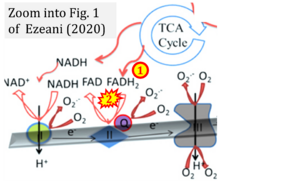Ezeani 2020 Front Biosci (Schol Ed)
| Ezeani M (2020) Aberrant cardiac metabolism leads to cardiac arrhythmia. Front Biosci (Schol Ed) 12:200-21. https://doi.org/10.2741/S547 |
Ezeani M (2020) Front Biosci (Schol Ed)
Abstract: Diabetes, obesity and increased body mass index are associated with changes in metabolism that lead to an inadequate reservoir or use of ATP in the heart and susceptibility to arrhythmia. Lack of availability of ATP and abnormal levels of metabolic end products can cause gene reprogramming and electrical remodelling that make myfibers susceptible to arrhythmia. Understanding the metabolic aberrations that lead to arrhythmia require better understanding of cardiac metabolism. Here, I discuss metabolic genes, enzymes and reducing equivalents and functional aspects of metabolic-induced arrhythmia with a special focus on atrial induced arrhythmia. It appears that normalisation of altered Kv1.5 channel, an oxygen sensing ion channel and fulfillment of oxygen demand by myocardium might offer a new strategy for preventing alterations of repolarisation that cause arrhythmia.
• Bioblast editor: Gnaiger E
Correction: FADH2 and Complex II
- FADH2 is shown as the substrate feeding electrons into Complex II (CII). This is wrong and requires correction - for details see Gnaiger (2024).
- Gnaiger E (2024) Complex II ambiguities ― FADH2 in the electron transfer system. J Biol Chem 300:105470. https://doi.org/10.1016/j.jbc.2023.105470 - »Bioblast link«
Labels:
Enzyme: Complex II;succinate dehydrogenase


